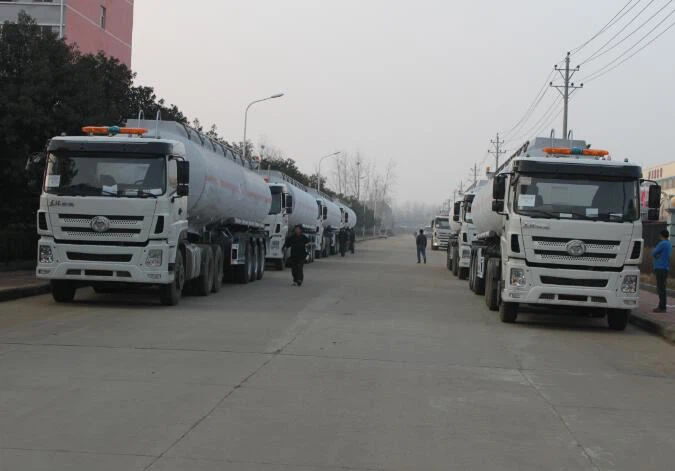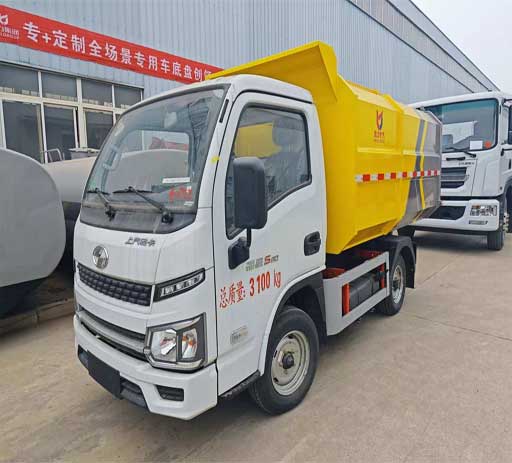Everything You Need to Know About Refrigerated Vans

Introduction to Refrigerated Vans
Refrigerated vans, also known as reefer vans, are specialized vehicles designed to transport temperature-sensitive goods. These vans are equipped with refrigeration units that maintain a controlled temperature inside the cargo area, ensuring that perishable items like food, pharmaceuticals, and flowers arrive at their destination in optimal condition. The importance of refrigerated transportation cannot be overstated, as it plays a crucial role in various industries including food service, pharmaceuticals, and logistics.
Understanding the Types of Refrigerated Vans
1. Chilled Vans
Chilled vans are designed to maintain temperatures generally between 0°C and 4°C (32°F to 39°F). They are ideal for transporting fresh produce, dairy products, and meats. These vans are typically insulated and may have a refrigeration unit that uses either compressor or eutectic systems.
2. Frozen Vans
Frozen vans are capable of maintaining sub-zero temperatures, typically around -18°C (0°F). They are essential for transporting frozen foods like ice cream, frozen vegetables, and seafood. The design of frozen vans includes superior insulation as well as powerful refrigeration systems to effectively handle the lower temperatures.
3. Multi-Temperature Vans
Multi-temperature vans can carry products that require different temperature regimes within the same vehicle. These vans are equipped with separate refrigeration zones, allowing for the transportation of chilled foods in one compartment while keeping frozen goods in another. Such versatility makes them highly efficient for businesses with diverse product portfolios.
Key Features of Refrigerated Vans
1. Insulation
High-quality insulation is essential for a good refrigerated van. It helps maintain the desired temperature by reducing heat transfer between the interior and exterior. Common insulating materials include polyurethane foam and polystyrene.
2. Refrigeration Unit
The heart of any refrigerated van is its refrigeration unit. These units can be powered through various means, including the vehicle’s engine or a separate electric power source. Understanding the different types of units can help you choose the best option for your needs.
3. Temperature Control System

A reliable temperature control system is crucial for monitoring and maintaining the desired temperature. Many modern vans are equipped with digital thermostats that can provide real-time temperature readings and alerts if the temperature fluctuates outside of the set range.
4. Load Securing Devices
Using appropriate load securing devices is vital to ensure products remain stable during transit. Features may include tie-down points, nets, and wooden slats to help prevent goods from shifting, which can lead to damage.
5. Easy Access Doors
Refrigerated vans typically have multiple access points to facilitate easy loading and unloading of products. This can save time and labor costs, particularly when handling larger shipments.
Benefits of Using Refrigerated Vans
1. Food Safety
The primary benefit of refrigerated vans is the assurance of food safety. By maintaining appropriate temperatures, these vans help prevent the growth of harmful bacteria that can lead to foodborne illnesses.
2. Extended Shelf Life
Transporting goods in a refrigerated environment significantly extends their shelf life. This is especially crucial for perishable items such as fruits, vegetables, dairy, and meat products, which otherwise would spoil quickly.
3. Versatility
Refrigerated vans are not limited to food transport. They can also be used for pharmaceuticals, floral arrangements, and other temperature-sensitive items, making them a versatile tool for many businesses.

4. Compliance with Regulations
Many industries are required to comply with stringent health and safety regulations. Using refrigerated vehicles helps businesses meet these standards, thus maintaining their licenses and reputations.
How to Choose the Right Refrigerated Van
1. Determine Your Needs
Assess what types of goods you will be transporting—consider whether they need to remain at frozen, chilled, or ambient temperatures. The nature of your products will determine the type of refrigerated van you need.
2. Evaluate Size and Capacity
Consider the volume of goods you typically transport. Vans come in various sizes, so it’s important to select one that fits your operational needs without unnecessary overflow or underutilization.
3. Look for Energy Efficiency
Energy efficiency is an important factor when selecting a refrigerated van. Units that consume less power while maintaining proper temperatures can save you money over time.
4. Assess Maintenance and Support
Research the availability of maintenance services and warranties. A good manufacturer or dealer should provide support for repairs, servicing, and spare parts.
Cost Considerations for Refrigerated Vans
1. Purchase Costs
The upfront costs of refrigerated vans can vary significantly based on size, type (chilled vs. frozen), and additional features. It is advisable to obtain multiple quotes from different dealers.
2. Operational Costs
Operational costs include fuel consumption, maintenance, and repairs. Advanced, energy-efficient vans may have higher initial costs but can save money over time through lower operational expenses.
3. Insurance and Licensing
Insurance for refrigerated vehicles might be higher due to the expensive nature of cargo. Ensure you discuss coverage options with your insurance provider to protect your investment.
Practical Examples of Refrigerated Vans in Use
1. Food Distribution
A common example includes restaurants and caterers using refrigerated vans to transport ingredients and prepared dishes. For instance, a caterer might transport chilled shrimp cocktails for an event while ensuring they remain at a safe temperature.

2. Pharmaceutical Delivery
Companies that transport vaccines require refrigerated vans to maintain a controlled environment. The logistics team may use a multi-temperature van to deliver vaccines while keeping other medical supplies at different temperatures.
3. Floral Distributors
Florists often rely on refrigerated vans to transport flowers that are sensitive to temperature and humidity changes. By maintaining proper temperatures, the blooms remain fresh longer, ensuring high quality for customers.
Maintaining Your Refrigerated Van
1. Regular Inspections
Schedule regular inspections of the refrigeration unit, insulation, and temperature control systems. Early detection of issues can save time and repair costs.
2. Cleaning the Interior
Regularly clean the interior of the van to prevent contamination and odors. Food residue and spills should be addressed immediately to maintain hygiene.
3. Monitoring Temperature Logs
Many modern refrigerated vans come with built-in data loggers. Regularly review these logs to ensure temperature stability during transit.
FAQ Section
1. What is the primary purpose of a refrigerated van?
The primary purpose of a refrigerated van is to transport perishable goods while maintaining a controlled temperature to prevent spoilage.
2. Can I use a regular van for refrigerated transport?
While a regular van can be used, it may not provide the necessary insulation and temperature control required for temperature-sensitive goods.
3. How do I know what size refrigerated van I need?
Consider the volume of goods you typically transport. Consulting with a supplier can help determine the appropriate size based on your operational needs.
4. What maintenance is required for refrigerated vans?
Regular inspections, cleaning the interior, and monitoring the refrigeration system are crucial for maintaining a refrigerated van.
5. Are there any regulations for transporting food in refrigerated vans?
Yes, regulations can vary by region and may require certain temperature control standards to be met in order to ensure food safety.
6. What temperature should a refrigerated van maintain for fresh produce?
A refrigerated van designed for fresh produce should typically maintain a temperature between 0°C and 4°C (32°F to 39°F).
